Structures 901 Cherry Role Designer | Name William McDonough Occupation Architect Movies Transforming Energy | |
 | ||
Awards Presidential Award for Sustainable Development, National Design Award, Presidential Green Chemistry Challenge Award Practice McDonough Innovation, William McDonough + Partners, McDonough Braungart Design Chemistry Buildings NASA Sustainability Base, 901 Cherry (for Gap Inc., now home to YouTube), Adam Joseph Lewis Center at Oberlin College, Ford Motor Company's River Rouge Plant Books Cradle to Cradle: Remaking the Way We Make Things, The Upcycle: Beyond SustainabilityDesigning for Abundance Organizations founded McDonough Braungart Design Chemistry Similar People Michael Braungart, Paul Hawken, Janine Benyus, Buckminster Fuller, Ken Yeang | ||
William mcdonough cradle to cradle design
William Andrews McDonough is an American designer, advisor, author, and thought leader. McDonough is founding principal of William McDonough + Partners, co-founder of McDonough Braungart Design Chemistry (MBDC) with German chemist Michael Braungart as well as co-author of Cradle to Cradle: Remaking the Way We Make Things and The Upcycle: Beyond Sustainability—Designing for Abundance, also with Braungart. McDonough's career is focused on creating a beneficial footprint. He espouses a message that we can design materials, systems, companies, products, buildings, and communities that continuously improve over time.
Contents
- William mcdonough cradle to cradle design
- Resource abundance by design william mcdonough at wef
- Biography
- Architectural philosophy
- Cradle to Cradle Products Innovation Institute
- World Economic Forum
- Reception
- Completed works
- Published works
- References
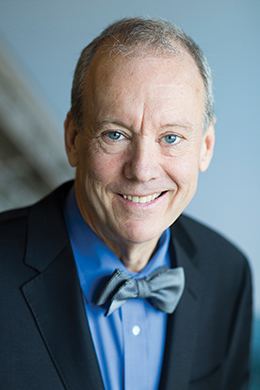
Resource abundance by design william mcdonough at wef
Biography

McDonough was born in Tokyo, the son of an American Seagram's executive, and trained at Dartmouth College and Yale University. In 1981 McDonough founded his architectural practice, and his first major commission was the 1984 Environmental Defense Fund Headquarters. The EDF's requirement of good indoor air quality in the structure exposed McDonough to the need for sustainable development.
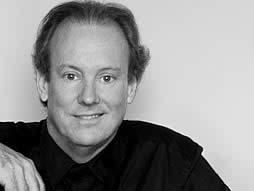
McDonough's architecture practice, William McDonough + Partners operates studios in Charlottesville, Virginia, and San Francisco, California. McDonough moved his practice from New York City to Charlottesville in 1994 when he was appointed as the Dean of the School of Architecture at the University of Virginia. He served as Dean until 1999 and has since served as a professor of business administration and an alumni research professor. He is also co-founder of McDonough Braungart Design Chemistry (MBDC), based in Charlottesville, Virginia. He is chairman of McDonough Advisors, which provides high-level consulting to companies, organizations, and governments around the world.
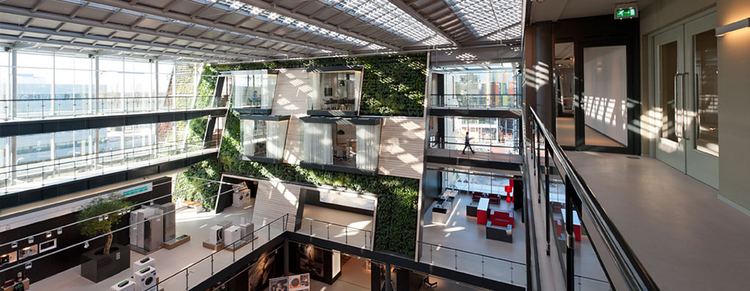
A number of large corporate projects for The Gap, Nike, and Herman Miller, led to his commission for a 20-year, US$2 billion environmental re-engineering of the Ford Motor Company's legendary River Rouge Plant in Dearborn, Michigan. The project included rolling out the world's largest "living roof" in October 2002. The roof of the 1.1 million square foot (100,000 m²) Dearborn truck assembly plant was covered with more than 10 acres (40,000 m²) of sedum, a low-growing ground cover.

In 1996 McDonough became the first and only individual recipient of the Presidential Award for Sustainable Development. In 1999 Time called him "Hero for the Planet". In 2002 he wrote (with Michael Braungart) Cradle to Cradle: Remaking the Way We Make Things. In 2004 he received a National Design Award for environmental design from the Smithsonian Cooper-Hewitt National Design Museum. He is also a Senior Fellow of the Design Futures Council.
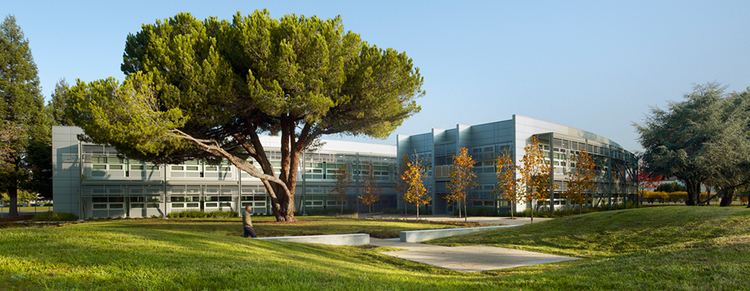
McDonough is also a Senior Advisor and Venture Partner at VantagePoint Capital Partners, one of the largest venture capital investors in clean technology.
Architectural philosophy
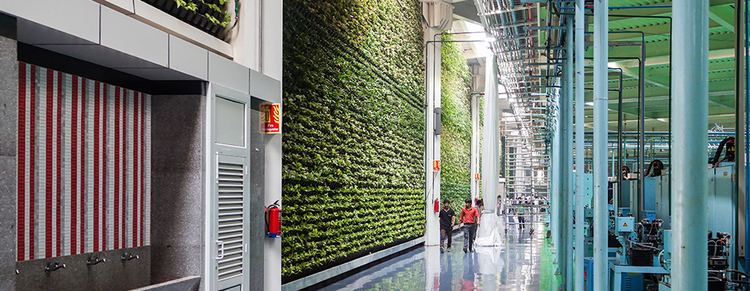
William McDonough and his architecture and urban design firm, William McDonough + Partners, ground their work in Cradle to Cradle Design, a philosophy developed by McDonough and German chemist Dr. Michael Braungart in their 2002 book, Cradle to Cradle: Remaking the Way We Make Things. The goal is to frame design as "a beneficial, regenerative force—one that seeks to create ecological footprints to delight in, not lament."
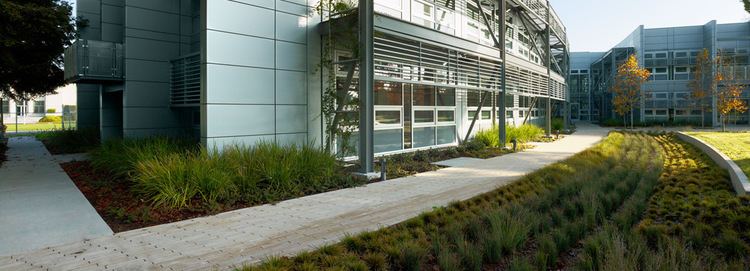
The design of the firm is often categorized as green architecture or sustainable architecture. The concept, closely linked with green building, is not known for a distinctive visual style, but for minimizing the negative environmental impact of a building. McDonough, however, is often quoted as saying the aspiration is to design something like a tree, something that creates good, like oxygen, rather than minimizing negative impact. McDonough's designs use solar and other passive energy efficiency techniques, as illustrated by the William McDonough + Partners' Flow House designed for the Make It Right Foundation New Orleans. The design incorporates deep overhangs, multiple connections with exterior areas allowing for lots of daylight and natural ventilation, roof mounted PV panels, water cisterns to harvest rainwater runoff and rain gardens to absorb any storm runoff.

In 1984, McDonough and his colleagues designed the Environmental Defense Fund office in New York City. Since then, William McDonough + Partners has been responsible for other milestones in the movement, such as 901 Cherry Ave in San Bruno, California, completed in 1997 for Gap, Inc.; it is now home to Google's YouTube. The building features a 70,000-square-foot (6,500 m2) green roof that helps to prevent water runoff, insulates the building from noise and provides a habitat for several species, and received the BusinessWeek/Architectural Record Design Award in 1998. The Bernheim Arboretum Visitor Center for the Bernheim Arboretum and Research Forest, in Clermont, Kentucky, completed in 2005, blurs the line between outdoor and indoor space. This project, like others designed by William McDonough + Partners, draws heavily on the biophilia hypothesis - the study of the human desire and physiological need for contact with nature. The building was awarded the U.S. Green Building Council's Leadership in Energy and Environmental Design Platinum rating.
Together with his architecture firm, McDonough developed a master plan for the design of Park 20|20, the first large-scale urban development in the Netherlands that adopts the Cradle to Cradle philosophy.
William McDonough co-founded the Make It Right Foundation New Orleans with Brad Pitt. This is an effort to rebuild the Lower Ninth Ward in New Orleans.
Dedicated in 2012, NASA Ames Research Center's Sustainability Base, is designed to harvest more energy than it needs to operate and to cleanse its own water. It was designed to meet a conventional budget and tight timeline, be a test bed for NASA technologies, and it exceeds LEED Platinum metrics. The facility is designed to "learn"—and continuously improve—over time.
Cradle to Cradle Products Innovation Institute
On May 20, 2010 at Google Corporate Headquarters, the Googleplex, McDonough announced the launch of the Green Products Innovation Institute, which was later renamed the Cradle to Cradle Products Innovation Institute. The Institute builds on the 2008 California state law that establishes the nation’s first green chemistry program. The non-profit public/private Institute has received the Cradle to Cradle product certification program on an exclusive, worldwide basis to accelerate the transition to safe material use and increased material reutilization. Executives from Google, Walmart, YouTube, Shaw Inc. and Herman Miller Inc. joined McDonough for the announcement.
World Economic Forum
At the January 2014 World Economic Forum (WEF) Annual Meeting held in Davos, Switzerland, William McDonough led the first CEO workshop that was centered around sustainable design, with an added focus on Cradle and Cradle, The Upcycle, and the circular economy. Prior to the 2014 meeting, McDonough participated in the organizing process in Geneva, when the WEF partnered with the United Nations to review the issue of climate change. It was later determined that climate change and the circular economy would be the main focus of the 2014 WEF meeting.
McDonough was appointed as Chair of the Forum’s Meta-Council on Circular Economy in July 2014.
Reception
In May 2008, Vanity Fair magazine offered an extensive profile of McDonough, which included a close look at several of his clients and projects, in the piece "Industrial Revolution, Take Two." Similar profiles about McDonough and his work have been published by the San Francisco Chronicle, Discover Magazine, and Time Magazine.
In 2013, Stanford University Libraries began the William McDonough “Living Archive". Stanford University Libraries will also host the William A. McDonough Archive (WAMA). This will be a first of a kind real-time "Living Archive".
He was recognized at the 2017 World Economic Forum in Davos, Switzerland as the recipient of the Fortune Award for Circular Economy Leadership for outstanding contribution to the development of a prosperous and sustainable economy.
